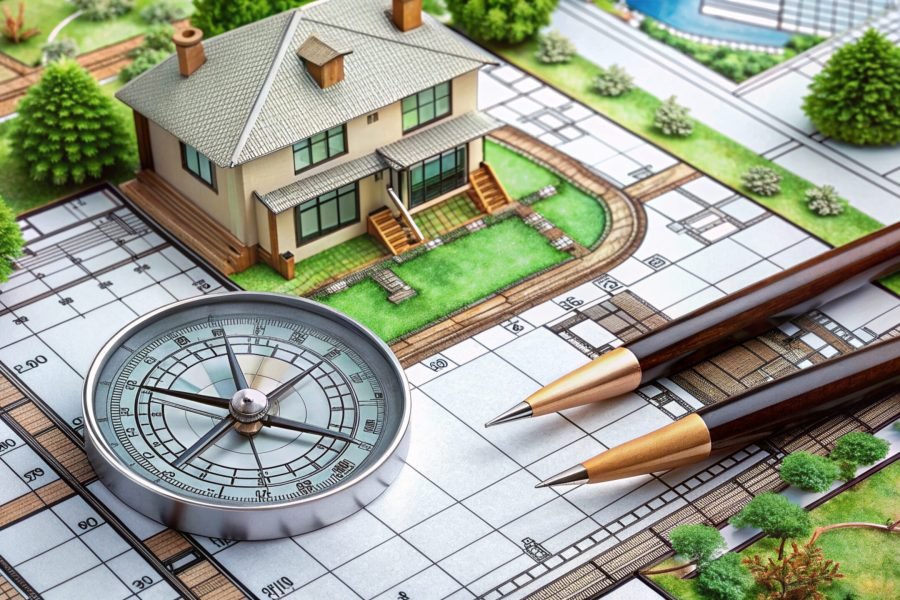In most home-buying conversations in Hyderabad, one question often arises quietly, sometimes after a lengthy discussion about floor plans and loan documents.
“Does the layout follow Vastu?”
You could be sitting with a tech professional who doesn’t care for rituals or with a young couple buying their first 2BHK, but chances are, someone in the family still wants the door facing east, the kitchen in the southeast, and the pooja room in the northeast. No compromises.
It’s 2025. Homes are smarter. Spaces are smaller. But Vastu Shastra for modern homes, surprisingly, is still very much a part of the conversation.
And the question we keep hearing is: Is it still relevant, or are we just too attached to it to let it go?
Vastu Without the Drama
Strip away the assumptions, and Vastu is really just a design approach that was developed a long time ago in a time when people built homes with natural light, airflow, and climate in mind.
It talks about the direction of rooms, the placement of doors and windows, and how different corners of a house are best used. Not because the gods will get angry, but because those placements worked better for health, comfort, and mental clarity in the Indian context.
People forget that for centuries, Vastu was just smart, climate-sensitive architecture.
Why It Still Feels Relevant Today
You don’t have to believe in energies or symbols to agree with the idea that sunlight in the morning is a good thing, or that a kitchen placed away from sleeping areas makes sense.
Here’s why many homebuyers, especially in cities like Hyderabad, still follow Vastu, even in flats and high-rises:
1. It’s About How a Home Feels, Not Just How It Looks
A space that gets light in the morning, has no visual clutter in key corners, and keeps heat-generating areas like kitchens away from bedrooms feels better. People don’t always know how to explain it, but they know when something feels “off”.
2. It’s One Less Thing to Worry About
Buying a home is stressful. Following Vastu even loosely gives people a bit of psychological comfort. A checklist, a system. It’s the same reason people look for reviews before buying a fridge. It’s about reducing uncertainty.
3. It’s Still a Factor for Resale
Even if you don’t care for Vastu, someone else in the market might. And when it’s time to sell or rent, having a Vastu-friendly layout or at least not having major non-compliance can make a difference.
The Misconceptions We Should Let Go Of
There are plenty of myths about Vastu Shastra, and unfortunately, a lot of people take it too literally. That’s when it turns from guidance into fear-driven decision-making.
So let’s clear a few things up:
- “Bad Vastu = bad luck.”
Not true. A cluttered, poorly ventilated home affects your mood. A room with no sunlight can make you feel dull. That’s what Vastu really helps avoid. It’s not about superstition; it’s about design with awareness. - “Fixing Vastu means breaking walls.”
Not. Most “corrections” involve small changes, a shift in furniture, adding soft lighting, or moving mirrors or plants. It’s rarely about renovation. - “It’s not meant for apartments.”
Vastu was designed for Indian geography, not for bungalows alone. Even in a city apartment, if you get decent sunlight, avoid mirrors near beds, and place work desks in good directions, you’re already halfway there.
Practical, Modern Vastu Tips That Work
So, how does one follow Vastu tips for modern lifestyle homes without going overboard? Here are a few ideas people are quietly applying today:
- Keep the northeast side as open and clean as possible. That’s the side where early sunlight comes in, great for calm, focus, and clarity.
- If your kitchen is in the southeast, that’s ideal. If not, make sure it’s well ventilated and doesn’t open directly into the bedrooms.
- Avoid placing mirrors opposite the bed. It’s not about bad energy it’s just visually distracting.
- When working from home, face north or east. It helps with natural light and focus.
- Use indoor plants to soften heavy corners. Place them near entrances or in overdecorated zones to balance out the space.
These small changes add up even if you don’t follow every rule in the book.
So, Is It a Myth?
If you expect Vastu tips to solve all your problems, then yes, it becomes a myth. But if you look at it as a way of living more thoughtfully, then it’s anything but outdated.
Vastu doesn’t need you to believe blindly. It asks you to observe your home, your day, your routine and to see how space either supports or blocks your comfort.
It’s a reminder that good architecture isn’t just about looks. It’s about how we feel inside our homes.
We don’t need to follow tradition for tradition’s sake. But when something old still makes sense in new settings, it’s worth holding on to or at least worth respecting.
Vastu Shastra doesn’t demand perfection. It suggests balance. And in a world where everything moves too fast, that kind of grounded thinking might just be more modern than we realise.
If you’re someone who values spaces that are designed not just to impress but to feel right,it helps to work with people who understand that balance.
That’s where Anokhi Homes stands out. They don’t just sell properties. They help you find homes that blend practical layouts with mindful planning, including those small touches that make your house feel like it was always meant for you.

